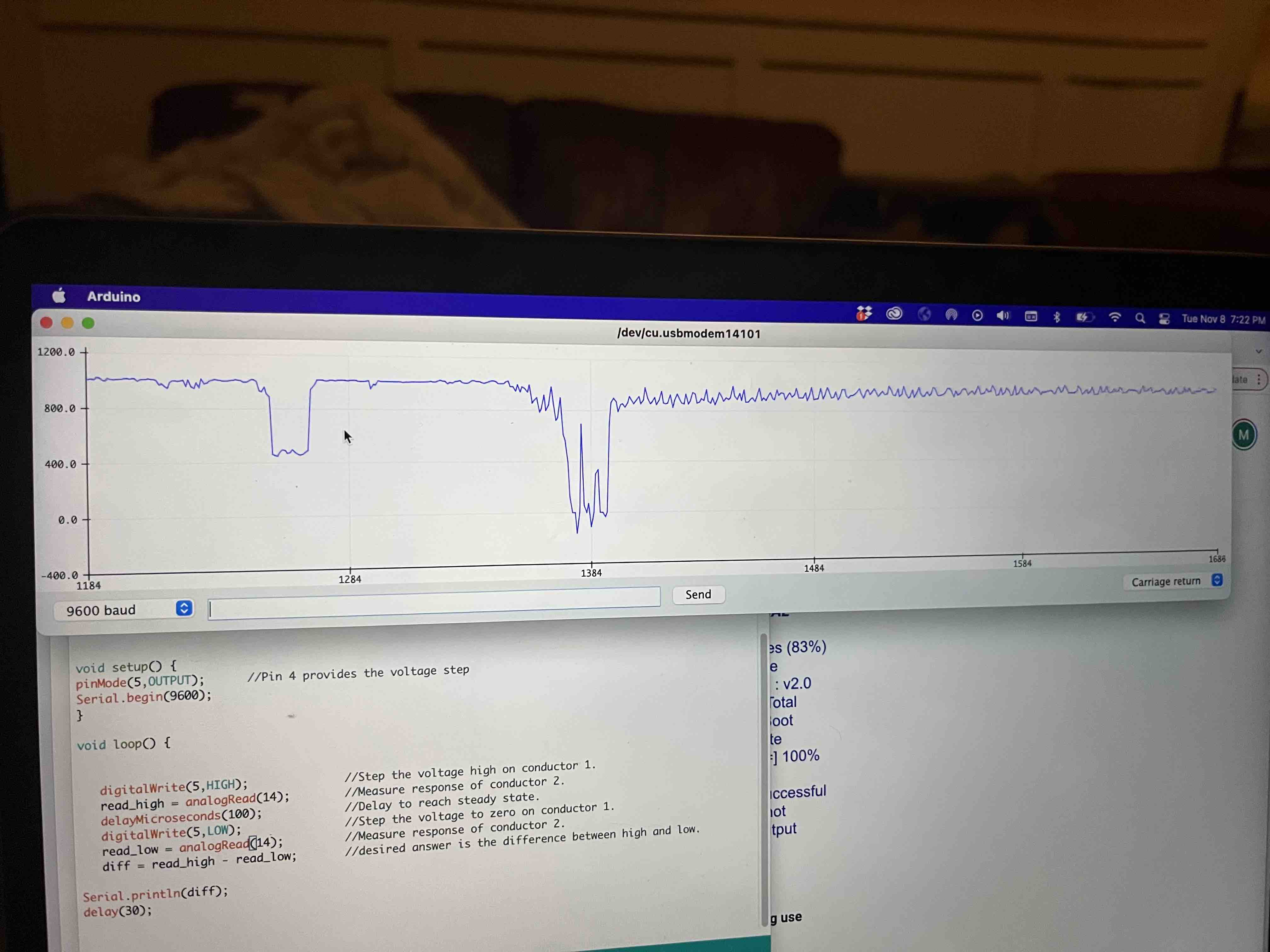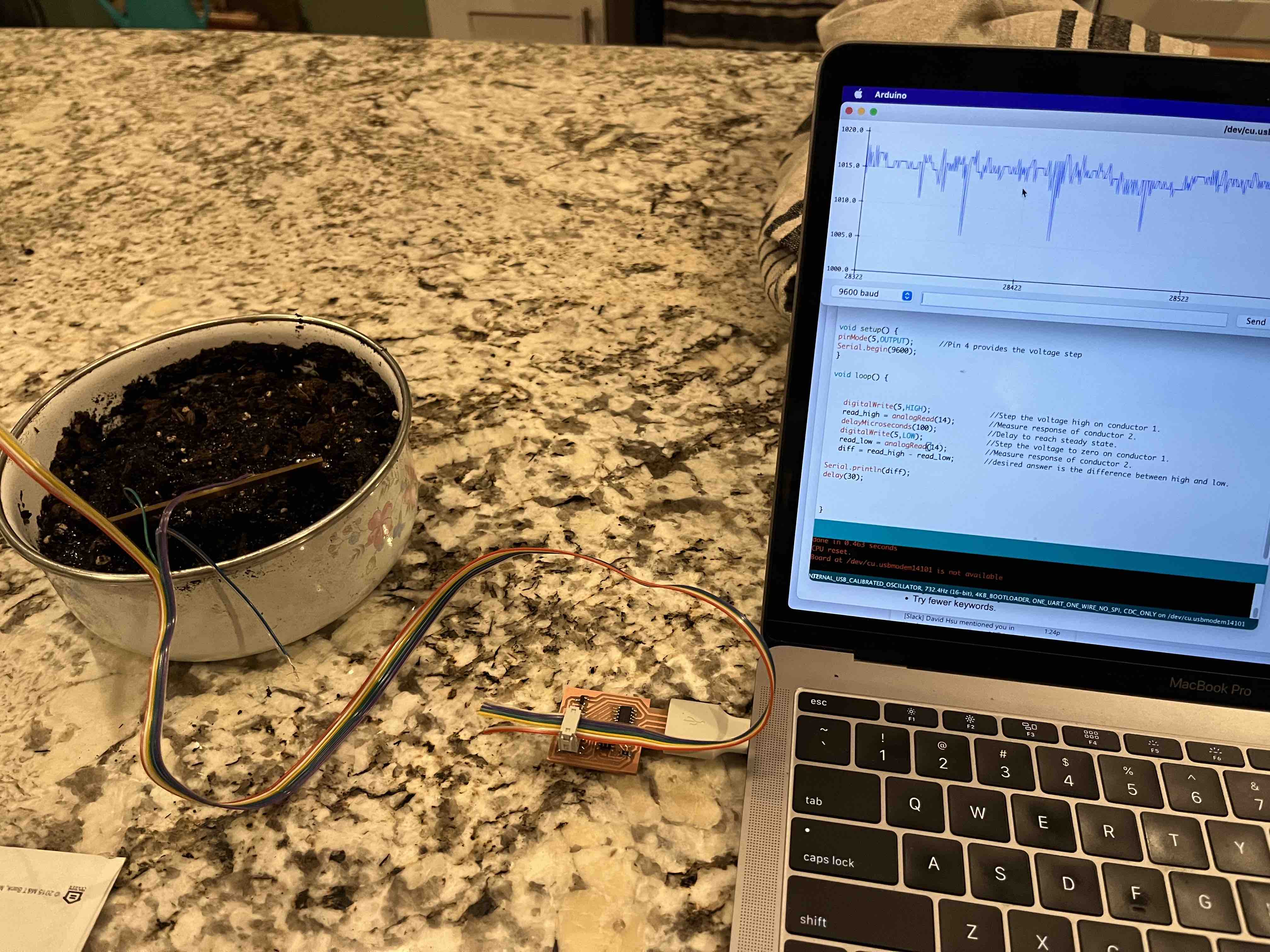How To Make (Almost) Anything Neil Gershenfeld
MCKENZIE ROSS HUMANN
MIT Department of Urban Studies and Planning
Input Devices
11.09.22
individual assignment:
measure something: add a sensor to a microcontroller board
that you have designed and read it
group assignment:
probe an input device's analog levels and digital signals

Schematic from Eagle

Board design

Preparing to solder

Three bowls of dry soil, wet soil, and damp castings next to the sensor.

Plotter from code that did not do any averaging. The sharp drops are from tapping the sensor board.

Plotter from code that adds up last 100 readings to smooth output.

Soil test set up

Soil test set up. Bowls are all different materials which impacted the capacitance readings.

